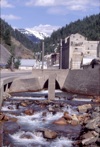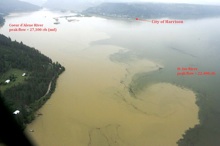Toxic Floods
Mine Wastes, Floods,
& a Destabilized Watershed


Toxic Floods
Mine Wastes, Floods,
& a Destabilized Watershed

Links:
National Academies of Science Report
Toxic Floods Poster - Overview
EPA
USGS
- Coeur d’Alene Basin Water-Quality Monitoring





“ . . . the potential long-term effectiveness of proposed remedial actions is severely limited by frequent flooding events in the basin and their potential to recontaminate remediated areas with contaminated sediments. Yet, flooding apparently received little attention in EPA’s selection of remedies.” National Academies of Science Report, 2005

National Academies of Science:
“The Coeur d’Alene River basin is a system where floods have a fundamental role in the resuspension and distribution of contaminants and particularly in the potential recontamination of remediated areas, including wetlands and river banks, by contaminated sediments. An understanding of the source areas of these contaminated sediments is evolving. Although impacts to waterfowl in the lower basin are severe, the durability of proposed remedial efforts to protect waterfowl is highly questionable. In addition, recontamination of wetland by flood waters containing lead-contaminated sediments would quickly undo the benefits of remediation. The committee sees the need for such measures as restoring wetlands on agricultural lands in the lower basin and upgrading the quality of the habitat in existing wetland areas that have the least likelihood of being recontaminated. ...
Remedial Measures to Address Transport and Effects of Particulate Lead
“Recontamination of remediated areas from flooding is a major concern. In selecting sites for remediation, EPA should consider the potential for recontamination and proceed with remedies that are most likely to be successful and durable. The the extent that water yield and flooding can be managed through land-use practices, it is important to include these practices in schemes designed to protect human and ecosystem health. ...”
